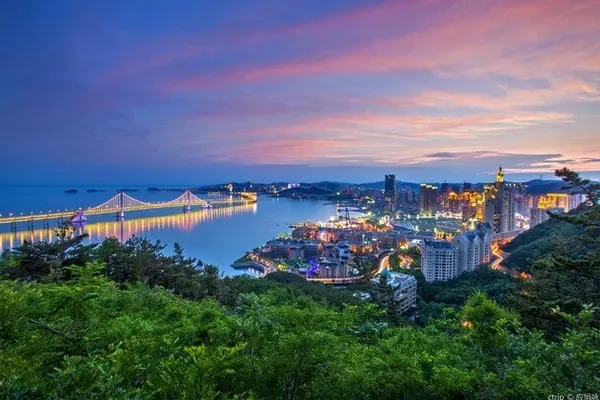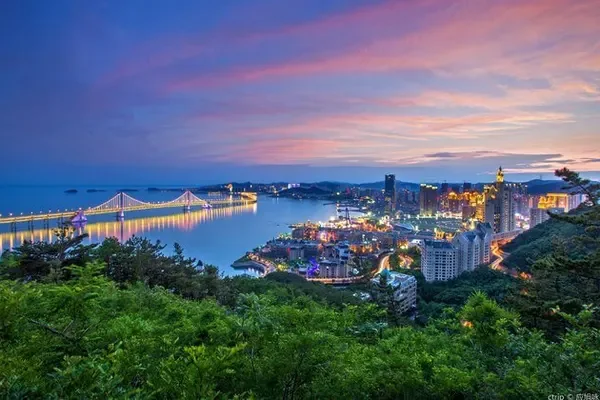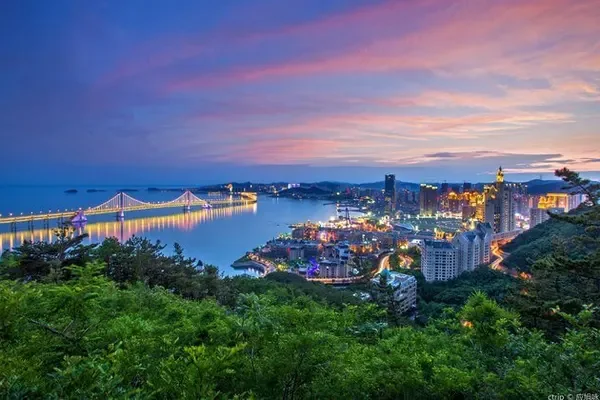Self-driving travel in 2014 (1) travel with grandson
Lugu Lake·Ya'an→Xichang
This is the third trip this year with my grandson.
The first time was from March 9th to 27th, 2014, a total of 19 days. I went to Sanya, Haikou, Hainan and Beihai, Guangxi.
The second time was from July 31 to August 14, 2014, a total of 15 days. I went to some scenic spots and scenic spots in Guangzhou, Shenzhen, Zhuhai, Shaoguan and Zhaoqing in Guangdong.
This is the third tour in 2014. The main reason is that many years ago, a Mosuo girl named Yang Erche Namu walked out of Lugu Lake, out of the northern Sichuan plateau, and finally out of China with her beautiful singing voice, intelligence and fearless courage. When she opened her eyes to look at the world, she found that the customs of her hometown were so unique, so she wrote a book "Out of the Country of Daughters", which revealed the unique customs and beautiful natural scenery of the Mosuo women's society in World: isolated plateau lakes, open-air hot springs where men and women bathe together, family society of matrilineal clans, Axia's walking marriage where men and women are free...thus has whetted the appetite of thousands of people who want to know about "Daughter Country". From then on, I regarded Lugu Lake as the last piece of paradise on earth, a world like a fairy tale. Thus, a long-cherished wish came into being quietly - to go into the "Nation of Daughters" to take a look. As time went by, this wish became stronger and stronger. Because the time has to be controlled within a week, I chose to travel by car. It is necessary to drive a car around Lugu Lake, which is called the mother lake by the Mosuo people, slowly for two laps, to see more of the rich cultural customs and beautiful natural scenery of Lugu Lake.
The beauty of Lugu Lake is definitely second to none. The lake water of Lugu Lake is surrounded by high mountains and mountains, and there are two months of snow in a year. Because it is located in the mountain cluster in the southwestern mountainous area of Sichuan, the natural damage is small, the forest resources are rich, the mountains and rivers are beautiful, the air is clear, and the scenery is charming. It has become one of the few lakes with low pollution in my country. She is the last tear on earth.
The beauty of Lugu Lake also lies in the islands, bays and beaches in the center. The eight islands, fourteen bays, seventeen beaches and one continuous dike island are embraced by green hills, and the lakeshore is winding and bayous. There are 5 whole islands and 3 peninsulas distributed on the lake. The islands in the lake are staggered and superimposed, with different shapes, like colorful snails floating, or exquisite bonsai randomly placed in the pure air. From a distance, some of the lake water is milky white, some are light green, some are dark blue, and some are dark green, which is really beautiful. Among them, Goddess Bay, Lover's Beach, Lover's Bay, Wangfei Island, Lige Peninsula, Liwubi Island, Tusi Island, Walking Marriage Bridge, Wangfei Mansion, and Big and Small Caohai have become the most valuable islands and scenic spots in Lugu Lake.
Lugu Lake, commonly known as Zuosuohai, was named Ledehai and Luku Lake in ancient times. In the Mosuo language of the Naxi people, "Lu" means a valley, and "Gu" means a lake, which means a lake in a valley.
Lugu Lake is located at the junction of Yanyuan County, Sichuan Province and Ninglang County, Yunnan Province. It is about 251 kilometers away from Xichang City, Sichuan Province, and it is 52 kilometers around Lugu Lake along the S307 Provincial Highway, Huanhu Highway and X023 Township Road. Lugu Lake is slightly northwest/southeast, with a length of 9.5 kilometers from north to south and a width of 5.2 kilometers from east to west. 105.3 meters, the average water depth is 40.3 meters, the capacity of the lake reservoir is 2.252 billion cubic meters, the transparency of the lake water is as high as 11 meters, and the maximum visibility is 12 meters. The lake water is clear and blue. It is one of the deepest freshwater lakes in China. The local Mosuo people call it mother lake.
According to the plan, we will stay in downtown Xichang tonight. From my home to Xichang City in Daliang Mountain, this section of the mountainous expressway is about 300 kilometers. It is estimated that it will take 4 hours to run, plus a rest in the service area. It is estimated that it will take five hours to reach Xichang City.
Today is Tuesday, November 18, 2014, on a sunny day, driving on the G5 Beijing-Kunming Expressway, now it is 13:00 Beijing time after lunch, let’s start!
The expressway on the cloud, the great power of modern science and technology, turned the insurmountable moat into a smooth road, but left behind the dizzying scenery outside the car window, which is shocking, amazing and touching. The street signs on the side of the road constantly urge the driver to change the state of the vehicle. A certain tunnel is several meters long, lights are turned on, and the speed limit is 60. A certain bridge is several meters long, and the speed limit is 70. All these kinds, one after another.
The G108 National Highway (Beijing to Kunming) was built in the last century, and cars can travel at a speed of 40-50 km/h. The Yaxi section of the G5 Beijing-Kunming Expressway (or Beijing to Kunming), which was opened to traffic in 2012, and the section from Ya'an South to Xichang, is called the Yaxi Expressway, which opens a new chapter in the natural moat.
The Yaxi Expressway first encountered Daxiang Mountain, also known as Niba Mountain, in the south of Ya’an. It is connected to Mount Emei in the east and Erlang Mountain in the west. It belongs to the Hengduan Mountains and constitutes the southwest edge of the Sichuan Basin. The highest peak is 3,552 meters above sea level and covers an area of 4,000 square kilometers. , is the watershed between the Qingyi River and the Dadu River. It blocks the cold and warm airflow, forming the climate characteristics of warm and dry sunshine on the south slope, and cold and rainy clouds and fog on the north slope. It is the hub of the west line of the ancient Southern Silk Road. The car passes through the service area of Yingjing and begins to go uphill continuously. There are a series of bridges and holes: Laohushi Tunnel (1690m), the famous Labajin Bridge (1040m long and 200m high), the famous Nibashan (Daxiangling) Tunnel (10,006 meters long), Jiuxiang Songlintou Bridge (1,000 meters), Liusha River Bridge (1,990 meters), and Hanyuan Tunnel (3,071 meters). I don’t know the true face of Lushan Mountain, but because I am in this mountain, I can’t feel the super-high piers of Labajin Bridge and the ventilation facilities of Nibashan Tunnel in the car. However, the length of Nibashan Tunnel and the obvious difference in weather outside the north and south entrances make People felt deeply, and successfully crossed Daxiangling and entered the Dadu River Valley.
The car then drove past Qinggangzui Super Bridge (across the Dadu River, continuous steel structure, 1415 meters), Gangzishang Tunnel (145 meters), Wanzitou Bridge (1318 meters), Changheba Bridge (1581 meters), Guanyinyan Super Large Bridge Bridge (across the Dadu River, single-sided cable-stayed, 2,840 meters), Sucunba Super Bridge (across the Dadu River, double A-tower cable-stayed, 570 meters), Xudianzi Tunnel (1,272 meters), Shimian Tunnel (1,324 meters meters), to achieve three times across the Dadu River and Pubugou Reservoir. The asbestos service area should be regarded as the busiest place on the Yaxi Expressway. Except for the necessary transportation facilities, it is simply a bazi for rushing to the market. There are snacks here: noodles, rice noodles, fern root powder, Chao Shou, grilled skewers, fried potatoes,... . 10 yuan to eat a bowl of noodles, dried tofu, winter bamboo shoots, whistle of minced meat, spicy soup and a chopstick with pea tips; there is a piece of local products: medicinal materials, dried goods, cured meat, citrus, live poultry, ... . Passengers on the return journey seem to be driving passenger and cargo vans, with large cardboard boxes and large plastic bags loaded onto the vehicles, which is really cool!
The 95 kilometers from Shimian to Mianning cross Tuowu Mountain, which is the most dangerous section of the Yaxi Expressway. After crossing asbestos and passing through the Jigongshan Tunnel (1575 meters), the continuous 51-kilometer slope road is followed by the Nanya River Bridge (1746 meters), the Luojiashan Tunnel (2185 meters, entering the long downhill), and the Chaluo Tunnel Group (4 tunnels ), Yaoheba Tunnel (575m), Maro Tunnel (300m), Ganhaizi Tunnel (1798m), Ganhaizi Bridge (1811m) and Tiezhaizi Tunnel Group (3700m), Tuowushan Tunnel - Yi Sea-Tayang Tunnel (1749m), Chayang River Bridge (600m), Lingshan Tunnel (2233m). The most spectacular is the double helix tunnel composed of Ganhaizi Tunnel and Tiezhaizi Tunnel. The so-called double helix tunnel can be understood as a "mountain winding ramp" composed of tunnels and bridges with the peak as the pillar. Raise or lower the road surface height by hundreds of meters, effectively avoid dangerous geological structures and ensure driving safety. The Ganhaizi Super Bridge between the double helix tunnels has 36 spans, the highest pier is 107 meters, and the seismic intensity is 9 degrees. Do remember to stop at the Guodidang parking area. This is the best place to take pictures of the large curvature of the Ganhaizi Bridge. Of course, the visibility and light direction that determine the effect of the photo are unpredictable.
The Yaxi Expressway has passed Tuowu Mountain and is now Mianning County. During the Long March of the Red Army, the story of Liu Bocheng and the leader of the Yi nationality Xiaoyedan on the beautiful shore of the Yihai Sea "blood alliance" happened here. Today, the Xichang Satellite Launch Center is receiving tourists. It's in Mianning County. There are still more than 80 kilometers from Mianning to Xichang. The pinyin letters on the green signs of the expressway and under the Chinese characters have been quietly replaced with Yi characters. The patterns with national characteristics tell you: we will arrive in Xichang soon.
In the end, I got off the expressway at the Xichang Toll Station at 5:40 p.m. and entered the urban area of Xichang. I found several hotels in a row, but they were all fully booked. Later, I stayed in a small hotel in a remote side street. It was already 6:00 p.m. Very, but also price 198 yuan (three people).




















